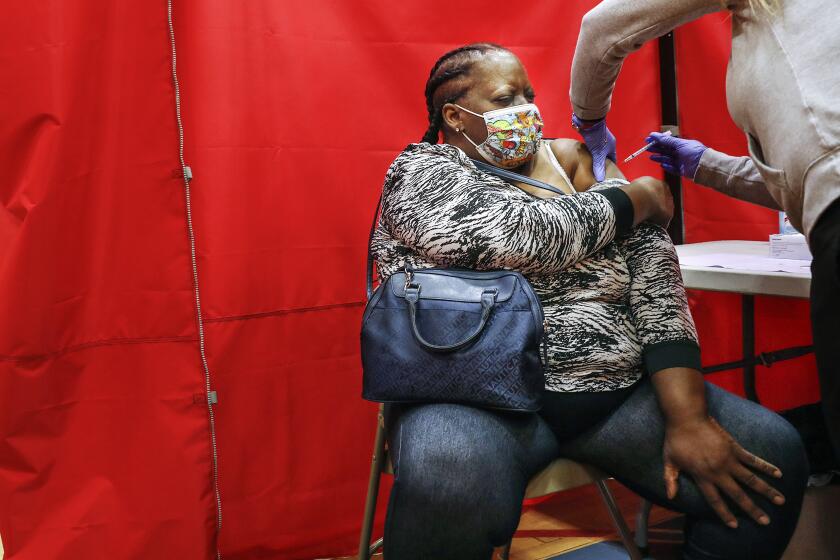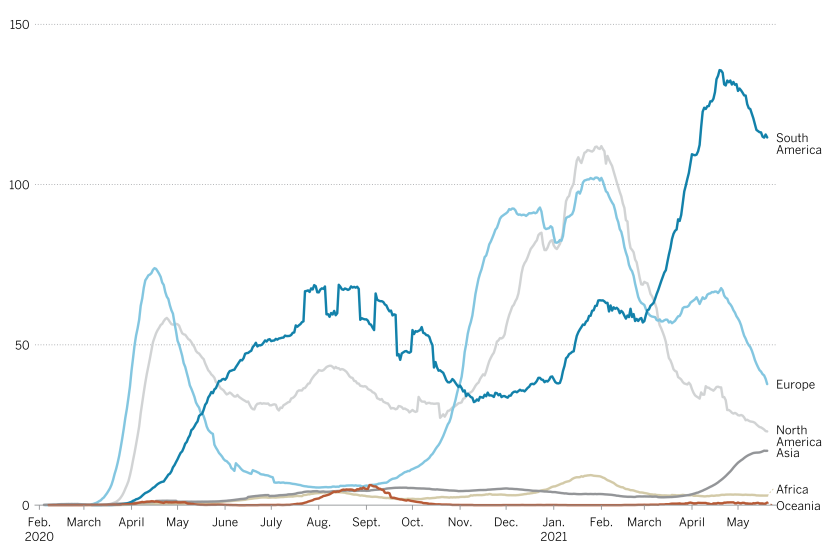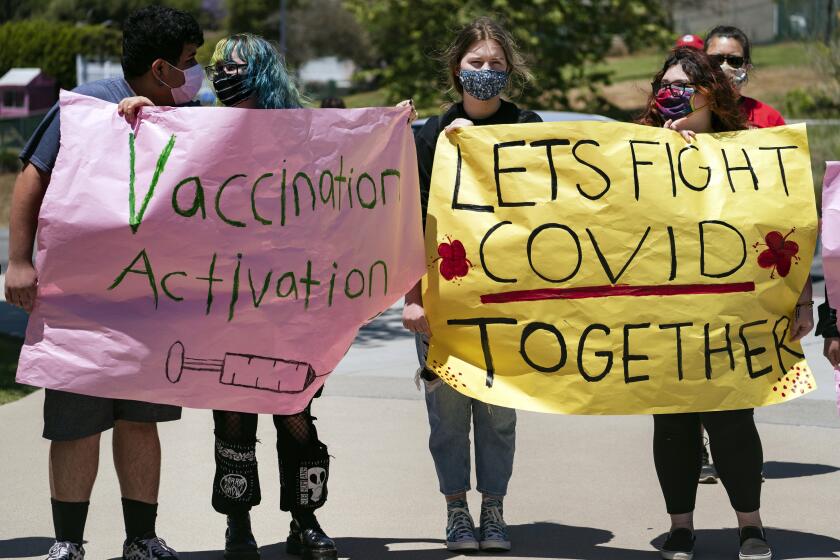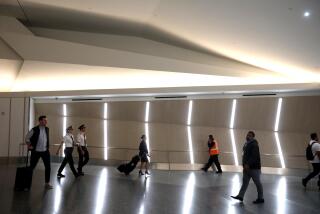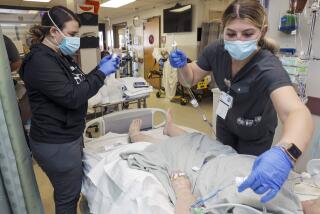Despite California’s overall COVID-19 vaccine progress, gaps remain
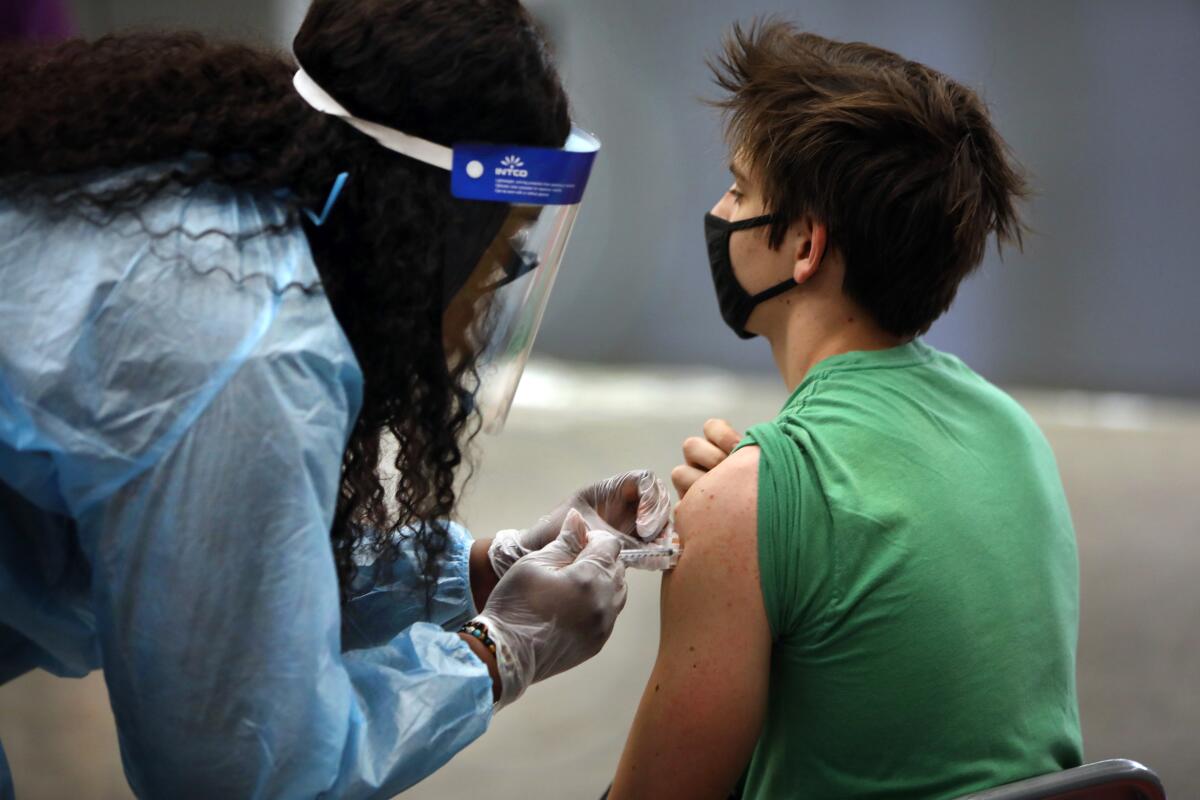
- Share via
Despite the overall progress made in vaccinating residents for COVID-19, vast gulfs in inoculation rates have opened among California’s 58 counties, illustrating the state’s uneven pace toward community immunity against the coronavirus.
On one end of the spectrum are the counties of Marin, Alpine, San Francisco, San Mateo, Santa Clara and San Diego, where more than 65% of each area’s residents have received at least one vaccine dose, according to data compiled by The Times.
On the other are Lassen, Tehama, Kings, Modoc and Yuba counties, where fewer than one-third of residents are even partially vaccinated.
Overall, more than 36 million doses have been doled out statewide, and 53.4% of Californians have gotten at least one shot to date.
Public Health Director Barbara Ferrer called the milestone “truly thrilling,” but said the county wants to vaccinate even more people before the June 15 reopening.
Officials have long preached that widespread inoculation is essential to stop COVID-19 and ensure that additional activities and more robust business operations can resume without triggering a wave of new infections.
“Our economy is more open, and we are interacting more with each other than we were when we entered our third surge this past winter,” Dr. Grant Colfax, director of the San Francisco Department of Public Health, said in a recent statement. “But instead of surging again and going into another lockdown, our case rates and hospitalizations continue to fall. That is the power of the vaccines at work in our city.”
Estimates vary on how many residents will need to be vaccinated to reach longer-lasting herd immunity, the point at which enough people have been inoculated to protect the larger population against the virus. That threshold is usually pegged at 80% or higher.
And while a generally high statewide level of vaccination may be enough to ward off another devastating surge, the concern is that the coronavirus could still flare up in areas where coverage is low.
As of Wednesday, 16 California counties had yet to report 40% of their residents receiving at least one vaccine dose, The Times’ data show.
It is important to note, though, that not everyone is eligible to roll up their sleeves yet.
Two of the vaccines available in the United States — the single-shot from Johnson & Johnson and Moderna’s two-dose regimen — are eligible only for use in adults. The Pfizer-BioNTech vaccine, which also requires two shots, can be used in children as young as 12.
COVID-19 deaths are going down, but the pandemic is far from over.
There are a host of reasons why vaccine coverage could vary so widely. For starters, there are practical issues related to access.
It may be harder for those living in rural or more far-flung areas to find convenient vaccination options. Other residents may be too slammed with work or their responsibilities at home to carve out time to visit a site — or face language or technological barriers that make it difficult to figure out how or where to get vaccinated.
There is also a segment of the population that is generally hesitant toward or adamantly opposed to the vaccines. Some may be skeptical for political reasons or because of deep-rooted distrust in healthcare systems that have historically underserved them.
Others may have concerns about the vaccines’ safety or efficacy, or have fallen victim to misinformation circulating widely on social media.
A growing number of public schools are using mascots, food trucks and prize giveaways to encourage students to get vaccinated against COVID-19 before summer vacation.
In San Bernardino County, where The Times’ data show 39.3% of all residents are at least partially vaccinated, “most people currently unvaccinated are not those who have strong objections to getting one,” according to interim Public Health Director Andrew Goldfrach.
“Rather, it’s younger adults who simply haven’t felt an urgency to do so as they see case rates fall and businesses open up,” he said in a statement last week. “We cannot stress strongly enough, however, that to delay getting your vaccine is simply an unnecessary risk. Why fool around when there is a possibility of serious illness, long-term problems or even death?”
Closing the vaccine gap, officials say, means making it as easy as possible for people to get their shots — and addressing whatever hang-ups are keeping them on the fence.
“The most important work to be done with the largest impact is engaging with residents in our communities to provide high-quality information about the vaccines, to dispel false myths and to answer all of your questions,” Los Angeles County Public Health Director Barbara Ferrer said Monday. “We hope that by taking vaccines to people, and responding to concerns about vaccine safety, we can make the progress needed to get to community immunity.”
A new CDC report on “breakthrough” infections in people who have been vaccinated against COVID-19 finds that just 2% of such cases result in death.
Officials and experts credit the rollout of vaccines with helping transform California from a coronavirus hot spot to a national leader.
The state has now logged one of the lowest case rates in the nation for more than a month, according to figures from the Centers for Disease Control and Prevention.
The number of residents falling ill enough to require hospitalization has also fallen to levels not seen since the earliest days of the pandemic. On Tuesday, 1,210 coronavirus-positive patients were hospitalized statewide — only a fraction of the 21,000-plus who were being cared for during the worst days of the winter spike.
In December, the L.A. County Department of Health Services estimated that as many as 1 in 80 county residents was infectious with the coronavirus. This week, only 1 in 2,600 residents is thought to be infectious.
Officials are so optimistic that they no longer anticipate having to provide projections on hospitalization demand due to COVID-19.
“Because of the low level of community transmission and the expected increase in herd immunity associated with ongoing vaccination, the risk of a future large increase in transmission appears to be low,” L.A. County officials wrote in an update this week.
Times staff writer Rong-Gong Lin II contributed to this report.
More to Read
Sign up for Essential California
The most important California stories and recommendations in your inbox every morning.
You may occasionally receive promotional content from the Los Angeles Times.
